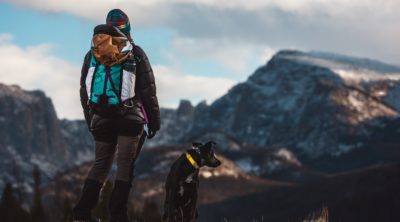
Ringworm is a fungal infection characterized by the appearance of some small round skin lesions. The hairless skin lesions, along with pustules and scaly skin are the most common symptoms of this disease, which can affect both humans and dogs. Find out the symptoms of this fungal infection in dogs, through this DogAppy write-up.
Ringworm is a skin disease, and a common health problem in dogs. It is actually a fungal infection caused by the fungus Dermatophyte. This fungal infection is characterized by the appearance of some small, hairless lesions that can grow and enlarge over a period of time. The fungi usually live on the skin and hair, and cause the hair shaft to break off. So, you can observe some hairless patches or lesions in your dog if it is suffering from this condition.
Ringworm in Canines
Causes
It is mainly caused by three types of fungi – Microsporum canis, Microsporum gypseum, or Trichophyton mentagrophytes. Being a highly contagious disease, this infection can spread easily through direct contact with an infected animal or human. This disease can also spread from an infected dog or other pets to humans. In rare cases, the fungi can spread from soil and cause an infection in dogs.
Symptoms
The appearance of some round, oblong, or spotted hairless lesions or patches is the classic symptom of this condition. Such skin lesions or patches usually appear on a small area of the skin, mostly on the head, and then gradually enlarge and expand. However, exposure to the fungus may not immediately produce symptoms. It has been found that a dog may take 10 to 12 days to develop the symptoms from the time of contracting the fungus.
Sometimes, the skin lesions are also characterized by the development of crusts and scales in the center. The development of small pustules on and around the skin lesions has also been observed. Some other symptoms of this condition are, itching, redness, and inflammation of the affected area. The symptoms of this fungal infection can resemble the symptoms of another common condition, known as demodectic mange.
Diagnosis and Treatment
Usually, a physical examination of the affected dog reveals the presence of skin lesions. The infected hair of the animal is also examined under ultraviolet radiation to detect a ringworm infestation. The infected hair appears fluorescent under the ultraviolet radiation, if the fungus is present. However, only two species of fungi become fluorescent under the ultraviolet radiation. Therefore, for a definitive diagnosis, the infected hair is cultured.
In the initial stage, when only some small isolated lesions are present on the skin, antifungal creams or ointments can be used for treating this fungal infection. The commonly used topical antifungal ointments for this purpose are, miconazole cream and lotrimin cream. To make these topical ointments more effective, the hair around the lesions should be cut or trimmed closer to the skin. However, make sure that you do not irritate the lesions while doing so.
The topical ointments however, may not be able to provide quick relief. In such a situation, oral antifungal medications can be required. Veterinarians usually prescribe griseofulvin for canine ringworm, which can however, produce some side effects. Apart from griseofulvin, ketoconazole and itraconazole are also used for treating this condition.
Along with oral and topical antifungal medications, shampoos and dips can be used for containing the disease. It is better to cut or shorten your dog’s hair to enhance the efficacy of the shampoos and dips. The most commonly used products for this purpose are, chlorhexidine shampoo, miconazole shampoo, ketoconazole shampoo, lime sulfur dips, and chlorhexidine solution. For best results, shampoos and dips need to be applied twice a week. So, sufficient care needs to be taken to help recover your dog completely from this disease.
To ensure prompt treatment of the disease, the symptoms should be properly attended to by consulting a veterinarian. It is also important to take sufficient precautionary measures to prevent the spread of the disease to your family members. So, along with treating your dog, disinfect your house, especially the places which are favorable for fungal growth.
Disclaimer: This article is for informative purposes only, and should not be treated as a substitute for the medical advice of a veterinarian.
